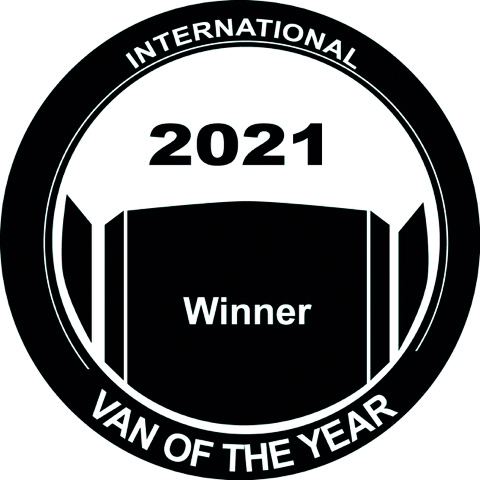Mercedes-Benz is set to overhaul the way it produces its future electric vehicles with a new platform aimed at accelerating its electrification strategy.
The new Electric Versatility Platform (EVP) is part of a €350m (£312m) investment in electric technologies and will provide the launch platform for the next-generation eSprinter, readying it for the US and Canadian markets. With the current generation of eSprinter available with just a single body size – medium length, high roof – and only as a panel van, Mercedes has realised it is potentially missing out on a huge array of customers. The new EVP will transform the number of body configurations, allowing the next-generation eSprinter to be used by multiple businesses.
“We have intensively used the past few months to reflect on our future and on our task. Around the globe our products help deliver parcels or deliver craftspeople to construction sites. Because of worsening climate change and evolving customer requirements, we want to come up with new solutions and address the challenges of mobility. One of our main tasks is to reduce emissions as the demand for transport increases,” says Marcus Breitschwerdt, head of Mercedes-Benz Vans.
“The next generation eSprinter will enable us to make many more body variants available. This will ensure we meet the requirements of our customers across multiple sectors in the future, while offering the advantages of locally emission-free electric drive.”
Mercedes-Benz Vans has committed to making all of its models available with a battery-electric drivetrain and has formulated the EVP with reliability, quality and TCO in mind. It has developed the platform for the large van segment with a three module system to ensure that all the current body configurations of the combustion van are available as an electric vehicle. That will mean zero-emission versions not only of panel vans, but also people movers and, importantly, chassis cabs – enabling box body vans suitable for the ever-expanding home delivery market.
“The Sprinter has been demonstrating our competence in the transport field for a quarter of a century,” explains Breitschwerdt. “In the field of electromobility, we have initiated many innovations in recent years. With the implementation of our accelerated electrification strategy, we’re combining the best of both worlds – innovation and expertise.
“First, we want to consolidate our position in a changing market. Moving transportation to the next level, this is the purpose that we at Mercedes-Benz Vans have set for ourselves and our ambition is to exceed our customer expectations by providing them with the most desirable vans and services. Our guiding principle is centred on economic, environmental and social sustainability with a strategy based on five pillars – a focus on profitable growth, embracing customers and growing recurrent revenues, targeting premium and profitable segments, lowering operating costs, and leading in electric drive and digital solutions,” he continues.
Mercedes-Benz Vans’ aim is to lead the electric van segment, and it is “fast-tracking development” in order to push through its new electrification strategy. The company is investing in customer and future-oriented solutions to achieve best-in-class performance and set a new standard in the van segment. It’s not just about the physical product, either, with electromobility and the networking of vehicles playing a critical part in Mercedes’ ambitions for new “digital solutions”.
The ultimate aim, however, is all part of parent company Daimler’s Ambition 2039 vision – to be completely C02 neutral across its global offerings.
It’s no easy task to convince a significant number of customers that electrification is the best way forward for their business, and with a share of more than 30% of the medium and large van segments in Europe, Mercedes-Benz has its work cut out.

The new strategy will be to refocus Mercedes-Benz Vans along similar lines to the passenger car division, focusing its messages as a clear premium brand for commercial vehicles and future-transport solutions for both fleet and private customers. It also hopes to focus sales in high-margin markets to enhance profitable growth worldwide as it rolls out these new features and products in Europe. That means Mercedes expects to grow its market presence in China and North America against a backdrop of reducing its fixed costs.
Profitability, emissions reduction and connected mobility are the buzzwords of the new endeavour. Of course, none of this is going to happen overnight, and despite Mercedes stating its intentions, the final product is unlikely to make production for several years.
“We see definite opportunities to grow the business in China and profitable growth opportunities in North America,” explains Klaus Rehkugler, head of Sales and Marketing at Mercedes-Benz Vans. “We’re already announcing and communicating the new eSprinter 2.0 with high-voltage components and module battery. It’s not going to be in 2021 but before 2025. Already today we see the demand is very high, so [Mercedes is] already placing the next development in the market chain. We will continue to invest in the future and eSprinter 2.0 is a clear strategy for the longer term.”
The principle of the EVP is its three-part modular package with a front module for high-voltage components, an underfloor module for scalable high-voltage battery packs and a rear module consisting of an electrically driven rear axle.
Breitschwerdt explains why this is such a special concept: “The platform is an approach that can greatly expand our product portfolio. Its modular concept allows us to provide greater flexibility to our customers and at the same time reduces complexity in production, which keeps costs down.”
“Our customers will also get more choice thanks to three different high-voltage battery packages. Even the smallest battery will have significantly more capacity than those of today. This flexible concept allows us to expand our reach in different ways. With three different battery packages we can address every customer’s needs, including specific TCO requirements, from short distance inner city transport to long distance transport. This concept will allow us to acquire new customer groups and develop new use cases,” Breitschwerdt adds.
“The entire Daimler company is convinced that electrifying our vehicles will be the path to sustainable mobility. With our van segment we have taken a lead and already have four electric driven vans in the market, starting 10 years ago with the e-cell Vito panel van. Since 2018 we have been moving at a more rapid pace with the launch of the eVito, eSprinter and eVito Tourer. We’re now seeking to electrify our whole product range.”
While the EVP is currently only destined for the Sprinter range, a form of the modular concept is likely to be transferred to the mid-sized eVito – a possibility after 2025.
The small Citan van, however, will not get the modularity of the EVP but will be electrified with the help of Mercedes’ manufacturing partner for small vans, Renault.
The eCitan will use the same platform as the updated Renault Kangoo ZE, which will launch after the all-new Renault Kangoo goes on sale later in 2021.
In the meantime, Mercedes is looking to expand its customer base for the current generation of its electrified products. It has already had considerable success with large orders from Hermes in Germany, as well as an order for 1,800 units of the eVito and eSprinter from Amazon.
The new platform will also enable the process of manufacturing the vans to be more efficient and will, according to Rehkugler, be on a single production line. But it’s the flexibility of the development that could lead to even more options for the Sprinter. “On one assembly line, we can meet production with a flexible combustion concept,” he says.
“[We’re] evaluating all strategic options and will consider a fuel cell system,” Rehkugler concludes. “It remains on the strategic options list and, together with our truck colleagues, it continues to be a part of our company’s research field.”
Diesel in the twilight zone
As the year date clicks over another notch, I’m reminded that we are now just nine years away from a ban on diesel vans.
While that sounds like a long time if you think about the life cycle of your typical van and its user, we are fast approaching a horizon for buying a diesel-engine model. While fleets often rotate their vehicles on a three or four-year lifespan, owner-drivers, tradespeople and small businesses often have lengthier plans for their assets. Eight to 10 years is not uncommon for the majority, which means we are already in the window where these types of buyers could be considering alternative-fuel vehicles for the first time.
The implications of the ban are a way off, but buy a diesel van in a few years and you could have an asset with very little resale value. We are already, then, in the twilight years of the diesel-engine van and 2021 could be the last year that they sell in the big numbers we have become accustomed to seeing.
To my friends in trades who have long been asking me about their new van buying options, I will be telling them that this year might be the right time to buy. That way, when 2029 rolls around they’ll be in the best position with a van that owes them nothing, and all the options of this brave new diesel-free world will be available to them – including (presumably) to buy the very last of the diesel vans on sale, should they really wish and legislation allows them to still be driven.
George Barrow is the UK judge for the International Van of the Year, the prestigious prize awarded by leading European LCV journalists.
Sponsored by:






